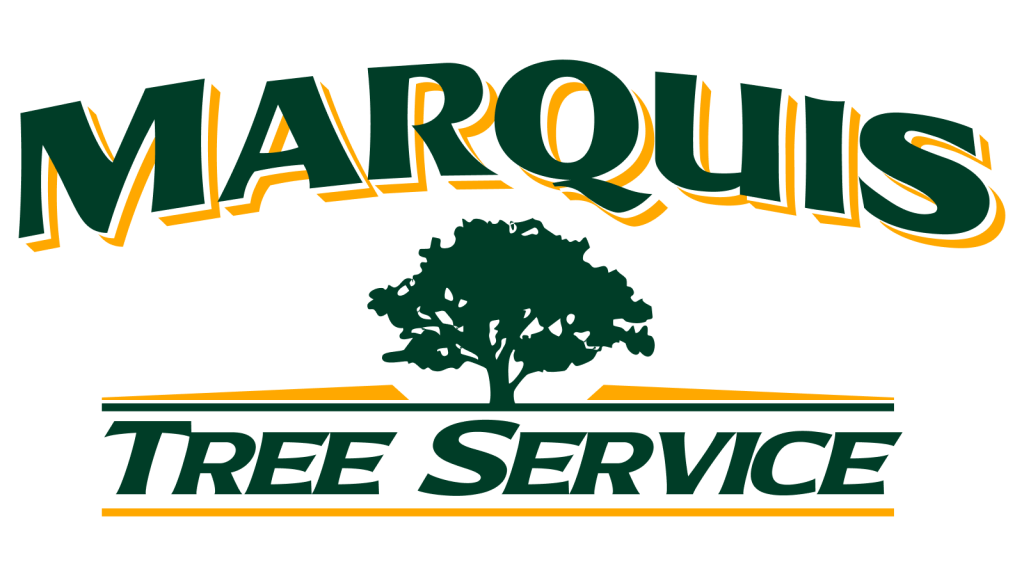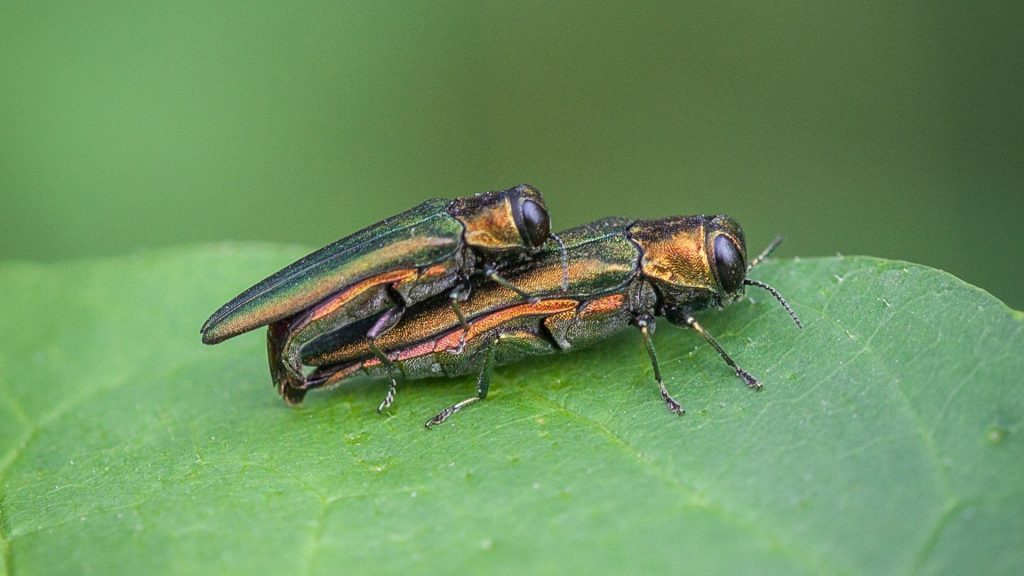You’ve invested time and money in creating a beautiful landscape around your Billerica home, only to find it threatened by common tree pests that can destroy your valuable trees. The last thing you want is to watch your majestic trees slowly decline because of these tiny invaders. Tree pests and infestations can wreak havoc on your property, causing extensive damage that’s both costly and heartbreaking.
In Middlesex County, homeowners frequently face the frustration of watching previously healthy trees develop yellowing leaves, curious holes in the bark, or unexplained dieback. These issues often strike when you’re planning outdoor activities or when you’re hoping to showcase your landscape’s beauty to visitors. The best way to prevent the spread of common tree pests is to stop them in their tracks before a slight nuisance becomes a persistent problem.
Understanding Massachusetts Tree Pests
Massachusetts forests and residential landscapes face constant threats from various common tree pests. These invaders can cause significant damage, affecting not just the appearance of your trees but their overall health and longevity. Learning to identify these common pests is the first step toward protecting your valuable trees.
Hemlock Woolly Adelgid
One of the most common tree pests in Massachusetts, the Hemlock Woolly Adelgid, is a serious threat to hemlock trees throughout Massachusetts. This tiny, aphid-like insect doesn’t actually eat tree leaves but instead sucks the sap from tender shoots of hemlock trees.
Signs of infestation include:
- White, cotton-like masses: Look for these distinctive cotton-like ovisacs at the base of hemlock needles.
- Needle discoloration: Affected needles may turn grayish rather than healthy deep green.
- Premature needle drop: Infested trees will lose needles before their normal cycle.
- Branch dieback: Progressive loss of branches, typically starting from the bottom of the tree.
Treatment options:
- Insecticidal treatments: Professionals apply them to the base of infected trees.
- Biological control: Beneficial predators like lady beetles can help reduce populations.
- Systemic treatments: These provide longer-lasting protection and can save valuable landscape specimens.
Winter Moth
The Winter Moth has become one of the most problematic common tree pests throughout Middlesex County. These voracious caterpillars will consume leaves from many deciduous trees, leaving them weakened and susceptible to other stresses.
Signs of infestation include:
- Small holes in leaves: Early feeding creates a shotgun pattern in foliage.
- Leaf skeletonization: Advanced feeding leaves only the leaf veins behind.
- Tree canopy thinning: Repeated defoliation weakens the tree significantly.
- Adult moths: Look for tan-colored moths flying in late November through December.
Treatment options:
- Targeted insecticide applications: Timing is critical, usually when caterpillars are actively feeding.
- Tree banding: Sticky barriers around tree trunks can trap adult females.
- Soil drench treatments: Professional preventative measures can be highly effective.
Emerald Ash Borer
The Emerald Ash Borer is known as one of the most devastating invasive species in North America. This metallic green beetle has destroyed millions of ash trees since its discovery in the United States.
Signs of infestation include:
- D-shaped exit holes: These distinctive 1/8-inch holes indicate where adult beetles have emerged.
- S-shaped tunnels: Look for these under the bark where larvae have fed.
- Canopy dieback: Typically starts at the top of the tree and progresses downward.
- Increased woodpecker activity: These birds feed on EAB larvae and may indicate an infestation.
Treatment options:
- Specialized tree injections: These can protect valuable ash trees.
- Soil injections: Professional treatments that provide multi-year protection.
- Bark sprays: Professionals apply bark spray to the trunk to prevent new infestations.
Spotted Lanternfly
A more recent arrival of common tree pests in Massachusetts, the Spotted Lanternfly feeds on over 100 plant species and poses a significant threat to trees and crops across the region. This invasive pest has been confirmed in several Middlesex County communities.
Signs of infestation include:
- Adults with distinctive markings: One-inch-long insects with spotted gray forewings and bright red hindwings.
- Black sooty mold: Develops on honeydew secretions where these insects feed.
- Weeping wounds: Trees may develop oozing sap where feeding has occurred.
- Wilting and dieback: Progressive symptoms in heavily infested trees.
Treatment options:
- Remove egg masses: Scrape and destroy egg masses found on trees and other surfaces.
- Targeted insecticide applications: Professional treatments when adults are active.
- Tree banding: Sticky traps to capture nymphs and adults.
Asian Longhorned Beetle
The Asian Longhorned Beetle has caused extensive damage in Massachusetts, particularly in Worcester County, where thousands of trees had to be removed to stop its spread.
Signs of infestation include:
- Round exit holes: Perfectly circular, dime-sized holes in the trunk or branches.
- Oval depressions in the bark: Where eggs are deposited.
- Sawdust-like material: Found around the base of infested trees.
- The beetle itself: Large (1-1.5 inches), shiny black with white spots and long antennae.
Treatment options:
- Early detection: Report suspected infestations immediately to state authorities.
- Tree removal: Unfortunately, removal is often the only option for infested trees.
- Preventative treatments: For high-value trees in threatened areas.
See Also: The Top 5 Reasons Why Trees Die
Why Choose Marquis Tree Service for Protection From Common Tree Pests
When it comes to protecting your trees from invasive pests, professional expertise makes all the difference. Here’s why Marquis Tree Service should be your first call for common tree pest troubles in Billerica and throughout Middlesex County:
Local knowledge and experience
Our team of Massachusetts-certified arborists has extensive experience identifying and treating the specific pests that threaten Billerica and the surrounding communities. We understand how these pests behave in our unique local environment.
Professional-grade treatments
We utilize commercial-grade treatments and application methods that aren’t available to homeowners, ensuring maximum effectiveness with minimal environmental impact while treating your landscape for common tree pests.
Comprehensive approach
Rather than treating symptoms, we address the underlying issues that make trees susceptible to pest infestations, promoting long-term tree health.
Preventative programs
Our customized preventative programs can protect your valuable trees before pests become established, saving you money and preserving your landscape investment.
Certified technicians
Our professional arborists hold industry certifications and receive ongoing training on the latest pest management techniques and treatments.
When you notice signs of pest activity, prompt action is crucial. Marquis Tree Service will assess the situation, identify the specific pest, and implement an effective treatment plan tailored to your property’s needs.
Read More: Turning a New Leaf: What to Expect When You Hire Massachusetts Certified Arborists
Pros and Cons of Tree Pest Management
Pros of Professional Tree Pest Management
- Early detection of problems: Professional arborists can spot pest issues before they become severe, saving trees that might otherwise be lost.
- Access to professional treatments: Certified arborists have access to treatment options not available to the general public, including trunk injections and specialized systemic treatments.
- Comprehensive approach: Professionals address overall tree health, not just the immediate pest problem, creating more resilient landscapes.
Cons of DIY Common Tree Pest Management
- Limited treatment options: Many effective professional treatments aren’t available to homeowners.
- Safety concerns: Some treatments involve climbing or working with chemicals that require professional training and equipment.
- Inadequate equipment: Professional-grade sprayers, injectors, and other equipment deliver treatments more effectively than consumer-grade alternatives.
While DIY tree care can be tempting for homeowners who enjoy working outdoors and want to save money, there are several factors to consider before tackling tree maintenance on your own. Tree health issues, such as disease and common tree pests, require expert knowledge that most homeowners don’t have, and improper techniques can weaken a tree and cause long-term damage.
Marquis Tree Service is Ready To Defend Your Landscape from Common Tree Pests
Your trees represent a significant investment in your property’s beauty, value, and environmental benefits. Protecting them from the ravages of invasive pests requires vigilance, knowledge, and sometimes professional intervention.
By familiarizing yourself with the common tree pests in Massachusetts and knowing what signs to look for, you’ve taken the first important step toward preserving your landscape’s health and beauty. Remember: early detection and prompt treatment are crucial—many trees can be saved if pest issues are addressed before they cause severe damage.
Contact Marquis Tree Service today to schedule a tree health assessment and learn how we can help protect your landscape from the most common tree pests in Billerica and beyond. Your trees will thank you.

